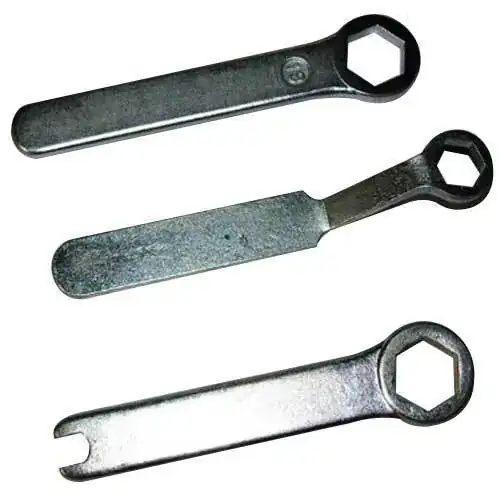In dealing with rusted/corroded bolts and nuts, it is helpful to understand the materials involved. Rust, or in general oxides of metals, are harder than the underlying metal. A good example is aluminum, a very soft base metal, but when oxidized is used for common sandpaper. The oxides are not only hard, but they are brittle and shatter into smaller, but often sharp smaller pieces.
So using a penetrant (oil, hot wax, even water) helps in that it carries the sharp particles away in a slurry, and helps prevent their sharp little edges from biting into other things and stop motion.
In general, I use two methods on rusted and stubborn fasteners. Mechanical and thermal. Well, thermal is really a modified mechanical, but I will explain that later.
In the simplest example of a rusted nut on a bolt, one tries to apply a penetrant oil, let it soak in, and then apply some more. The penetrant does not break up rust on it's own. Then at a later time, torque is applied through a wrench, and if the planets are properly aligned the nut will spin off the bolt. Smooth torque can work, BUT torque combined with some shock helps. Because the shock shatters the matrix of the hard oxides. To using a wrench, and hitting the bolt/nut with a hammer goes a long way is breaking up the oxides. This is why impact tools that tire shops use work so well on lug nuts. They shatter the rust matrix, and provide varying torque which helps release the matrix of rust particles. But even if you don't have impact tools, tapping on the nut can help it free up. So can moving it both ways. That motion helps release "ratcheting" rust particles, and encourages them to not bite in further, but rather to release, perhaps get crushed into smaller particles and flow away from the metal interfaces.
Thermal is mostly mechanical, but for steel it works well. Using the example of a bolt and a nut rusted, I would apply heat to the bolt, on the inside of the nut. (Using a fine torch tip, usually on an oxy-acetylene torch.) The heat expands the bolt, within the nut. The bolt is hotter than the nut and expands more, and the nut contains the expansion, causing force on the rust interface. That crushes the brittle oxides of metal. As the assembly is cooling, wiggle your wrench back and forth a bit to help crush up the oxides more.
This is just intended to be an introduction to the physics of what is going on, and help visualize the process of loosening rusted fasteners.
In my home shop, I mostly use air impact tools (electric ones are fine, I just have mostly air ones) and oxyacetylene torch. I also sometimes use an induction heater on rusty farm equipment, but I don't recommend that as a tool for most at-home mechanics. If I can't get impact with some oil to free things up, I will often apply heat from the oxyacetylene torch. However, keep in mind that the heat will change the metal properties, and if one uses heat, fasteners (think shock mounts) should be replaced with new ones. With many manufacturers using torque to yield fasteners, that may be the case for many fasteners on automobiles.
